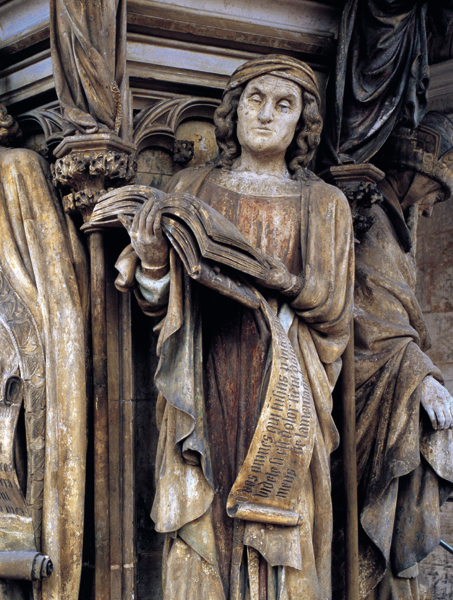Image Details

Erich Lessing/Art Resource, NY
The words of Jeremiah, written in Latin on a scroll, appear to stream down from the prophet’s open book. Carved by the Dutch artist Claus Sluter in about 1400, this larger-than-life sculpture is part of a monumental baptismal font (known today as the “Well of Moses”) from the Carthusian monastery of Champmol, in Dijon, France. The statue was originally painted and gilded, and the studious prophet wore a pair of genuine copper spectacles.
Most of the Book of Jeremiah is concerned with the life and times of the prophet. But the last chapter leaps forward in time to summarize the fulfillment of Jeremiah’s prophecies. In between, an unidentified voice informs us: “Thus far are the words of Jeremiah.” The final chapter, this voice implies, comes from a different source. Indeed, the last chapter is borrowed—almost word for word—from the Book of Kings. In the accompanying article, author Steve Delamarter asks: Whose voice is this? And why is it absent from some of the earliest manuscripts of the Book of Jeremiah?
